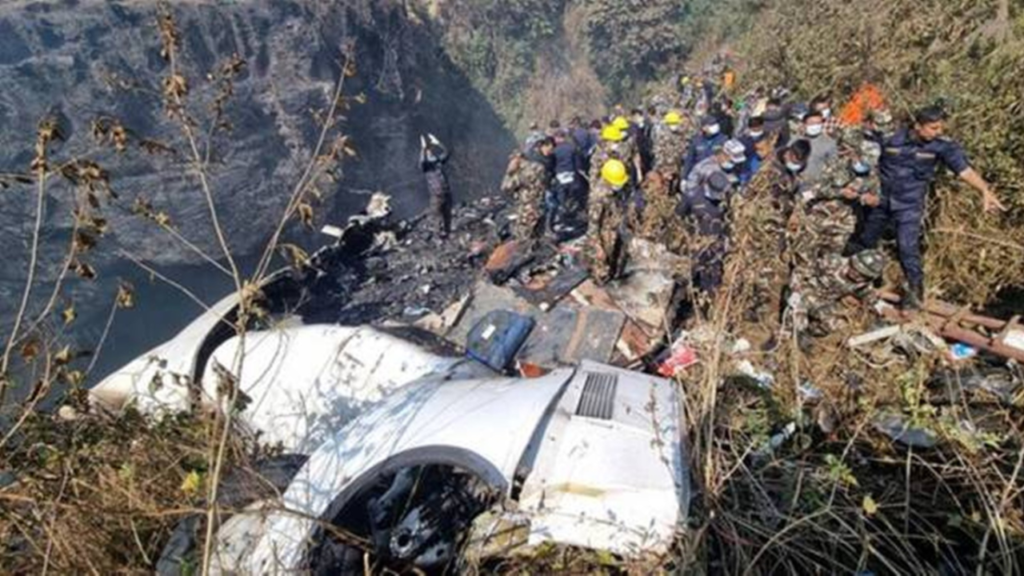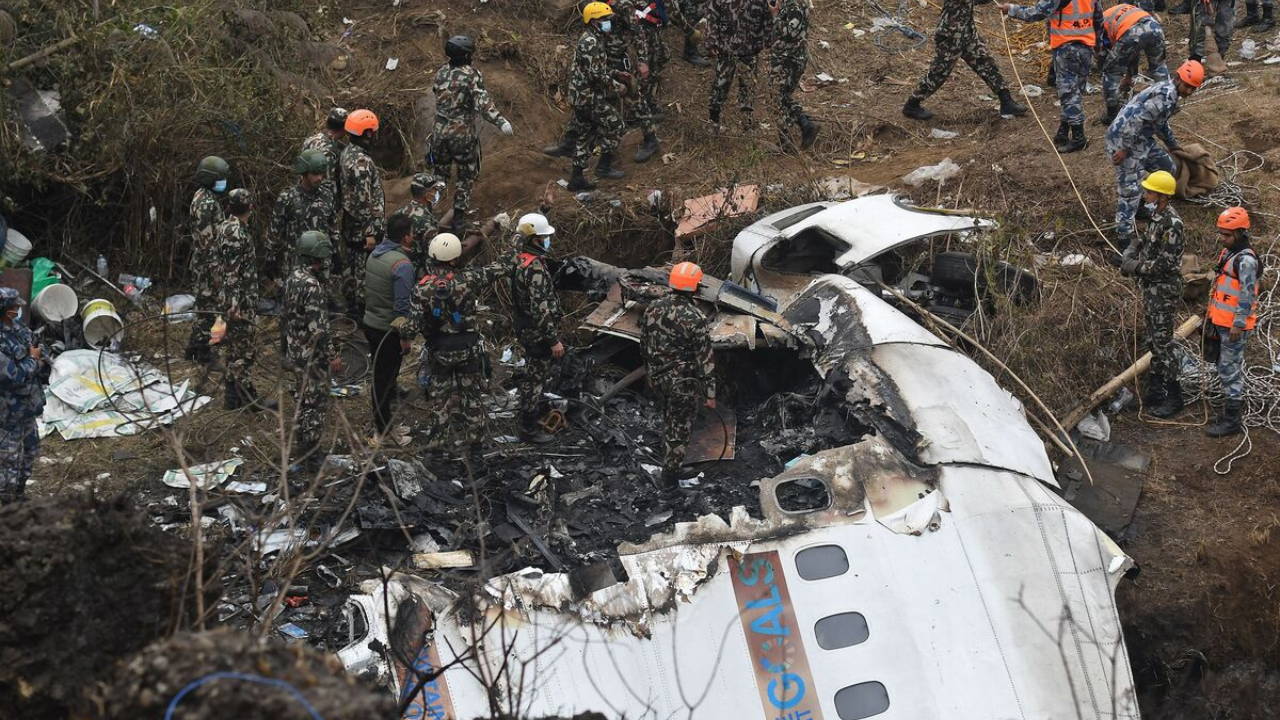Nepal Plane Crash: A government-appointed investigation panel has released a comprehensive report attributing the Yeti Airlines crash in Nepal earlier this year to ‘pilot error.’ Marking Nepal’s most significant aviation tragedy in thirty years, the incident claimed the lives of 72 individuals, including five Indian nationals. The investigation findings indicate that the Yeti Airlines plane crashed due to an error by the pilots, who inadvertently cut power, leading to an unintended movement of both condition levers, resulting in an aerodynamic stall.
Nepal Plane Crash Detailed Report
The catastrophic event unfolded in January 2023, when the ATR 72, carrying 68 passengers and four crew members, plunged into a steep gorge, disintegrating into fragments and erupting in flames as it neared its destination. On January 15, Yeti Airlines Flight 691 departed from Kathmandu’s Tribhuvan International Airport, crashing into the Seti River gorge between the old and new airports in the resort city of Pokhara.
The ill-fated aircraft was en route from Kathmandu to Pokhara, the second-largest city in Nepal, nestled beneath the scenic Annapurna mountain range. The crash resulted in 72 casualties, with only 71 bodies recovered so far, and the remaining missing passenger presumed dead.
Contrary to initial reports suggesting the crash occurred ’10 to 20 seconds’ before landing, an analysis of the cockpit voice recorder and flight data recorder revealed that the propellers of both engines entered a “feathered” position during the base leg of the descent.
A Nepali investigation team forwarded the flight data recorder and cockpit voice recorder of Yeti Airlines 691 to Singapore for a detailed examination to determine the cause of the tragic crash.

Additionally, the recently inaugurated Pokhara airport faced scrutiny following an expose by The New York Times on construction quality and cost irregularities, financed by Chinese state-owned firms. The article highlighted criticisms, including inflated costs and substandard construction managed by China Comprehensive Annual Maintenance Contract (CAMC) Engineering, a subsidiary of Sinomach. The report underscored accusations that compromised the airport’s quality.
According to The New York Times, Nepal had aspired to establish an international airport in Pokhara since the late 1970s, but political, bureaucratic, and financial challenges impeded progress until China intervened.
Always be updated with latest news articles, please visit on our website regularly…

